A Journey to Malpelo Island
Diving a Hammerhead shark hot spot in the Eastern Pacific
My quest to dive with hammerheads started like many good things do… with utter failure.
In 2011, I was diving out of Cabo San Lucas, and the dive operator suggested trying a hammerhead dive, where you go out to deeper water and search for the sharks. Off we went into the blue water, searching in a square column pattern, gradually ascending. For a brief flash of a second, we thought we might have seen one approach in the blue, but it was gone in an instant. About a year later, while in the Maldives, our group did a similar dive but again we were skunked.
In fairness, seeing hammerheads was not the primary goal of either of those trips, but my tangible disappointment in NOT seeing them made it very clear to me that if I wanted to see them, I had to make it my goal.
On the last day of the Maldives trip while we sailed back to Male, I spent the time obsessively researching where to find large schools of hammerheads using my laptop and the slow cell network internet dongles that the boat had on hand.
It seemed that the Eastern Pacific Ocean was a hot spot for scalloped hammerheads. I was familiar with Galapagos and Cocos Islands, but at the time had not heard about Malpelo Island.
I became more and more intrigued about Malpelo for the schools of hammerheads that visit the island, the variety of life it was possible to see there and also the fact that relatively few people can dive there each year. Only one liveaboard is allowed to have divers there at any time and it is a UNESCO World Heritage site.
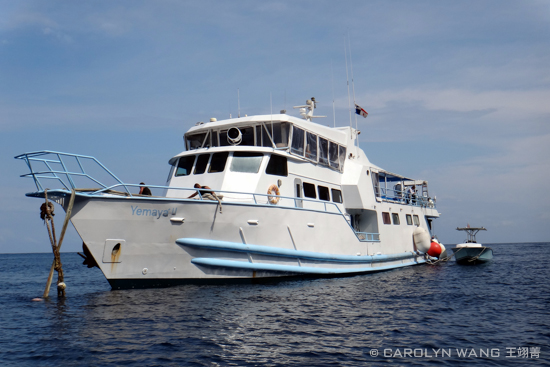
So when there was an opportunity to dive Malpelo this past February aboard the Yemaya liveaboard, I just knew I had to go.
Bluewater Travel took care of all of my travel and logistical needs with Coiba Dive Expeditions, so it made for a seamless lead up to the trip even though I was booked only a few weeks before the departure.
First Stop, Panama City
I took a direct flight from Los Angeles to Panama City and arrived about a day and half ahead of the liveaboard departure so I could ensure there were no issues if my luggage got delayed. As you can imagine, it’s very difficult (well, impossible really) for late arriving bags to catch up with you once you’re on the liveaboard, so arriving the day prior is always a good idea.
My airport transfers were arranged through Coiba, and their driver Aleerio met me at the airport and drove me to the Toscana Inn, where I would be staying for the night before meeting with the group to board the Yemaya the next day.
There are two hotels in Panama City that Coiba recommends - the Toscana and the Radisson. The Toscana is a mid-range hotel with very reasonable room prices. It’s no frills but centrally located and clean. The Toscana was approximately 35 mins from the airport and there is almost always traffic, so best to plan conservatively for time to get to and from the airport. The Radisson was about another 10 mins from the Toscana.
You can stay at any hotel or other location as well, but on the day of departure for the boat, you must rendezvous with the Coiba representative at either the Toscana or the Radisson to complete any remaining paperwork and board the large passenger buses for the trip to the Yemaya’s dock. If you’re looking to minimize the amount of hauling you need to do for your dive gear, it’s definitely more convenient to stay in one of the two hotels.
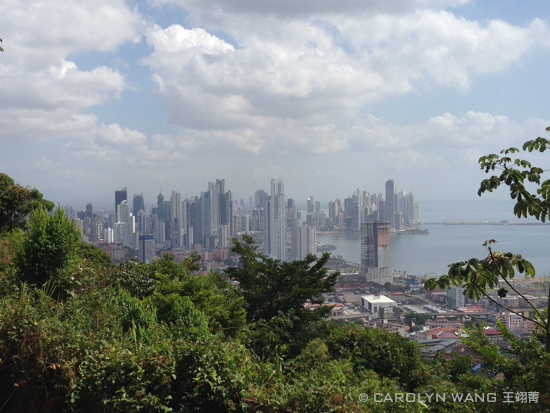
Since I had taken a red eye flight, I had the full day in Panama City to explore. Here you can see the modern skyscrapers in the distance, overlooking the older parts of the city closer to this lookout point.
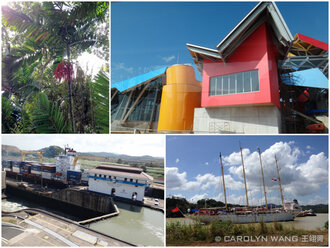
Coiba can arrange different excursions for you in Panama City or the surrounding areas like the Gamboa Rainforest. I’d definitely recommend taking a few days either before or on the back end of the liveaboard to see Panama City. My guide Rainald had excellent knowledge of the entire area and shared a lot of the history as we explored.
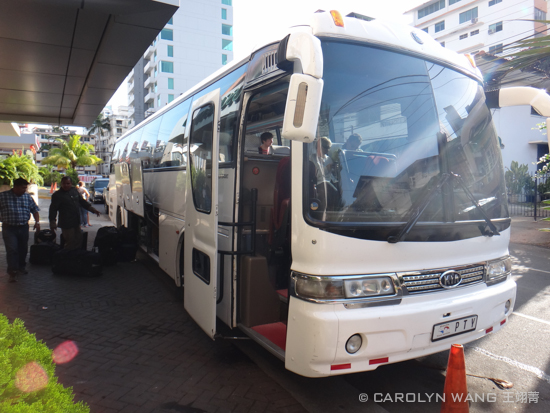
The next morning, Bianca from Coiba, along with Erica, one of the Yemaya dive guides came to pick us up in a private bus for transfer to the boat.
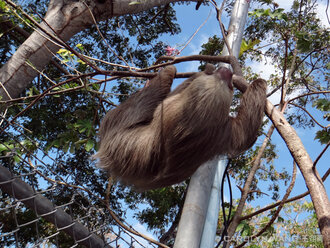
This sloth was climbing around the dock area as we waited to board the boat. Since this was the first trip of 2014 and the Yemaya had been in dry dock, it was actually near Panama City and the bus ride was very short. Normally it is a ~4 hour drive from Panama City to the boat dock.
All Aboard the Yemaya
The Yemaya is a 115 ft. vessel with 2 main decks and a mezzanine level. The crew warmly welcomed us and gave a tour of the boat and the rooms. As we left port, everyone made their last phone calls and text messages since we would not be within cell phone signal range until we returned to the mainland 10 days from later. We were officially going off the grid.
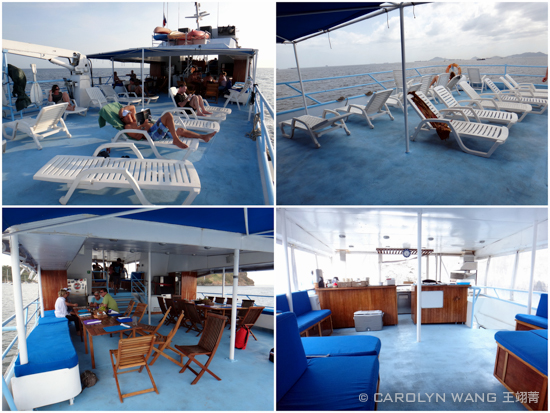
The Yemaya had plenty of room on the upper level with a sun deck, open air dining area, lounge and bar.
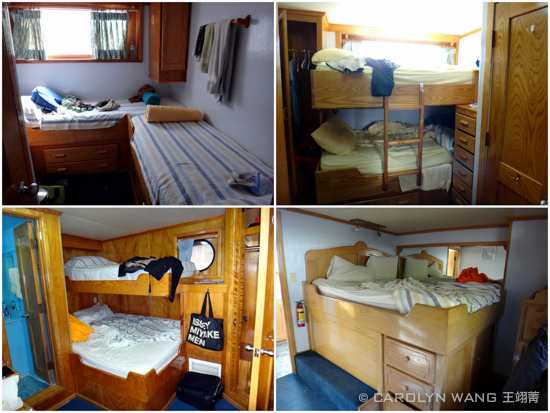
Unpacking and settling into our cabins. There are 8 guest rooms in total, with different bunk sizes and bathroom/shower configurations. Clockwise from the top left: Standard cabin w/shared shower and single bunks, standard cabin with private shower and slightly wider single bunks, master cabin 1 which is spacious w/ a full/queen size bed and large private bathroom, master cabin 2 with a full bed and a single bunk and private bathroom.
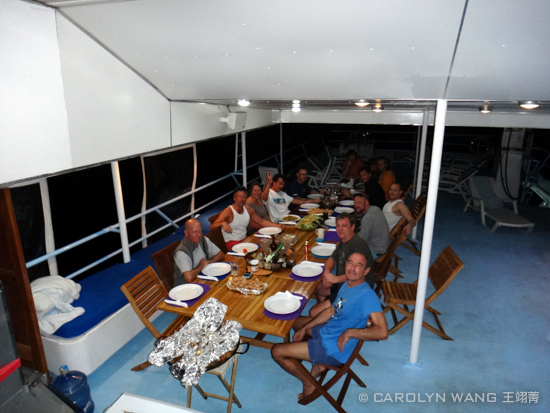
As we left shore, we settled in for the first of many great meals together. This was definitely a very diverse group, with guests from Germany, France, Russia, Spain, Denmark, Switzerland and the U.S.

Meals and snacks prepared by chef Nestor and his assistant/barman Nelson were generous, and we had a wide variety of dishes. There were several vegetarians and vegans onboard and they were easily accommodated as well.
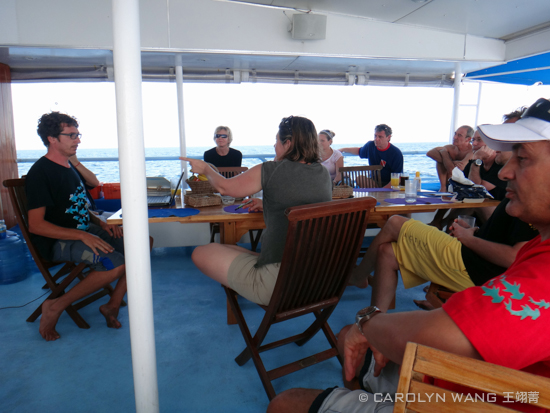
During the crossing to the island, we were given an overall dive briefing and assigned to our dive groups.
The Yemaya has a maximum of 16 guests, so each group had 8 divers with one instructor/guide each. We were scheduled for 3 dives a day, usually around 8 am, 11 am, and 3 pm, with meals and snacks served in between. There are no night dives at Malpelo since the sites can be exposed to strong currents and there isn’t a protected cove. Since we would also be the only liveaboard at the island at this time, there would be no issues with running into other groups at dive sites, which I was thrilled about!
Because of rapidly changing conditions and strong currents at the island, the boat also provided a Nautilus Lifeline to each guest for the duration of the trip. I definitely appreciated this additional safety measure. Each guest was also required to carry a safety sausage/SMB, and because everyone is diving as a group we all needed to be on the same gas mix, so everyone would be diving nitrox on this trip. You’re definitely going to want maximum NDL time as all of the dives are deep and there’s so much to see. If you don’t have your nitrox cert before the trip, the instructors on the Yemaya can certify you. You should also keep in mind the need to be cautious with your dive profiles because in the event of an emergency, Malpelo is very far from land, let alone a chamber.
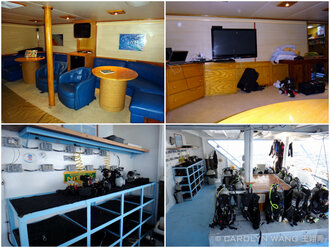
Other parts of the Yemaya included a salon/TV area that became a charging station for those of us with camera gear. Outside, there was a shelf area with rubber non-slip mats and air gun stations for cameras, and we set up our dive gear initially on the back deck before it was transferred over to the skiffs.
This travel day was also the perfect time to set up your camera gear and do any test shots or tinkering to ensure it was working properly for our first dives the next morning.
We left port around 1:30pm on Sunday and arrived at our mooring at Malpelo, over 300 miles away, on Tuesday morning at ~ 6 am for a total travel time of 41 hours from Panama City. The crossing for most trips will take about 35 hours.
Now 30-40 hours is (of course) a long, long time on any boat. I’d definitely recommend you come mentally and physically prepared for that aspect of the trip. Bring reading materials, workout gear, movies, work in progress images or video to edit, Cards Against Humanity, knitting, drawing materials or whatever you need to keep yourself entertained. Some guests even brought yoga mats and mediation pillows for the journey.
Fortunately, we had a very smooth crossing with calm seas, and the captain timed it so we arrived at Malpelo in the early AM just as the sun was coming up – a perfect way to start our first dive.

Wow, it really is just a giant rock. At first glance, Malpelo is probably not what comes to mind when you think about visiting an island. It is only about 1 mile in length, all unforgiving rock with very sheer drop offs into the ocean. The island is uninhabited with the exception of birds and a handful of residents assigned to a very small Columbian military outpost that keeps watch for poachers.
It’s Hammertime
I couldn’t wait to jump in the water after that long journey. I was ready to see some hammerheads!!!
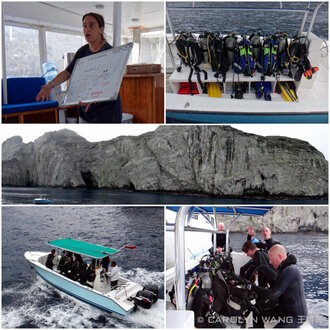
Our guides Erika and Luis briefed the respective groups on the dive sites we would be visiting first, and we eagerly boarded our assigned skiffs for the week.
It was a short ride out to our check out dive site. At Malpelo, the dive protocol is that everyone on the skiff must be ready at the same time to backroll in together, and you must do an immediate negative descent to the site. This is because almost all of the dive sites are live entries with no anchorage or moorings, and many of them are small underwater pinnacles. With the speed of the currents in the area, if you linger at the surface to tinker with your gear or have problems equalizing that slows your descent, you will likely get blown off the dive site entirely and end up drifting in open water until the skiff can retrieve you. A 7mm wetsuit is recommended because while water surface temps are in the 70s, below the thermocline it drops into the upper 60s.
Here’s the log from my first Malpelo dive:
2.11.14 El Altair de Virginia (around the north end of island from boat mooring)
- 9:14 am, 97 ft, 53 mins
- AWESOME! (BEST check out dive EVER)
- Schooling Hammerheads!!!
- Eagle Rays (4 – 5)
- Eels eels eels in every crevice
- Lots of puffer and trumpetfish
- Large schools of Whipper snappers
- Large Scorpionfish
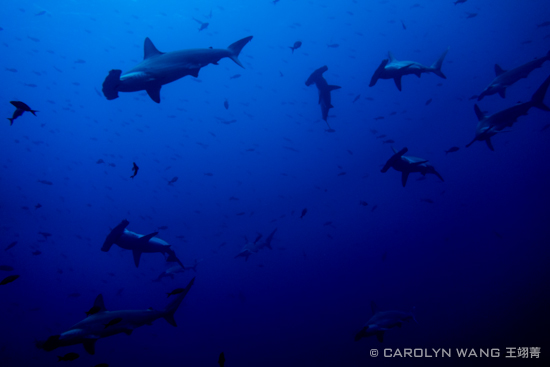
My first look at schooling hammerheads in Malpelo!
And it pretty much went on like that for the entire trip! We saw hammerheads on nearly every dive! These are just beautiful animals. It was absolutely breathtaking to see them traveling in huge schools and coming in closer at the cleaning stations.
The small island of Malpelo actually has some pretty diverse dive sites. Some were bare, rocky reefs, whereas others were pinnacles completely covered with brightly covered anemones. All of us guests had favorite sites we wanted to dive again after just a couple days. The beauty of Malpelo is that you can (and will want to) choose to do multiple dives at some of the spots, simply because the action there is so good.
Here is a small sample of some photos from the dives, and if you want to see even more, check out my Malpelo Underwater Photo Essay on the Underwater Photography Guide.
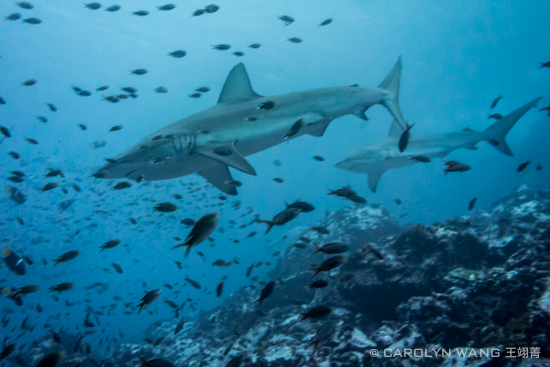
Galapagos sharks cruise just above the reef at the cleaning station.
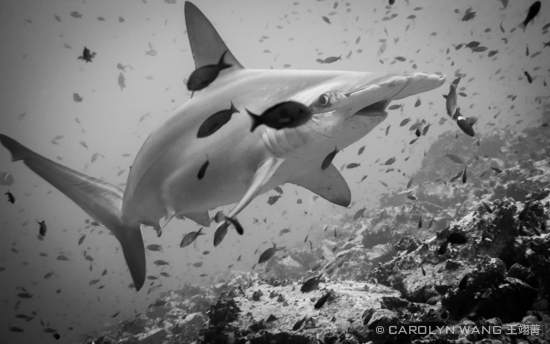
A scalloped hammerhead comes in closer for a cleaning.
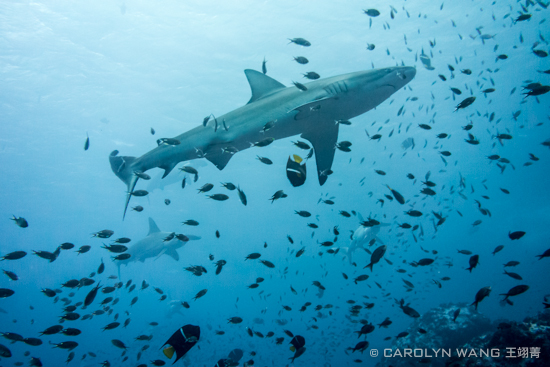
Galapagos sharks and hammerheads would cross paths at the cleaning station.
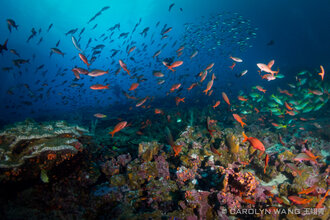
Schools of creole fish mingle with blue and gold snappers and many other reef fish.
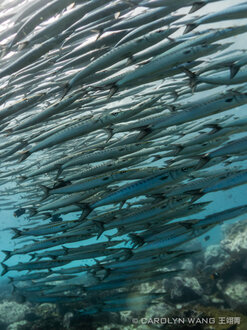
A massive school of pacific barracuda.
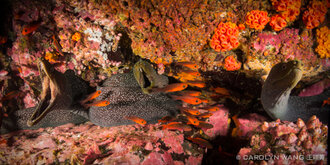
Eels were so common at Malpelo that you almost stopped noticing them… almost. These three enjoyed being holed up together.
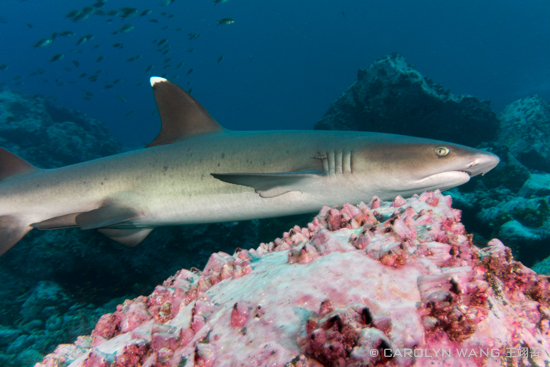
Several whitetip reef sharks also patrolled the rocky reef. They would swim around us for a bit and then dart under a reef formation to rest.
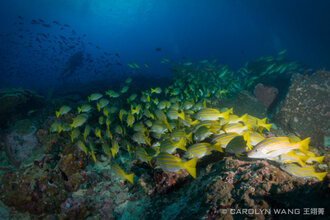
Herding a school of blue and gold snappers.
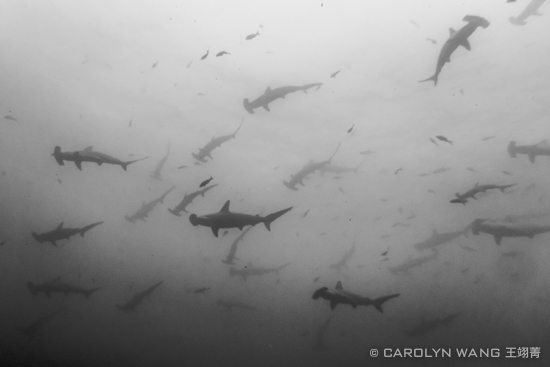
Our 21st dive on day 7 was the last of many spectacular dives. It was with some sadness that we jumped in for our final dive at Malpelo. It goes without saying that we all requested La Nevera, the cleaning station, for one last look at all the hammerheads.
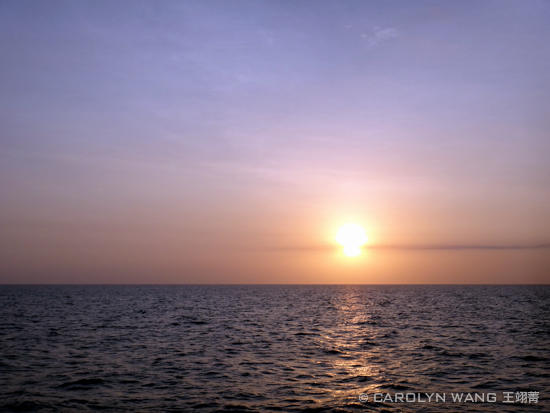
Later that night, we untied from the mooring and started the journey back to land and Panama City.
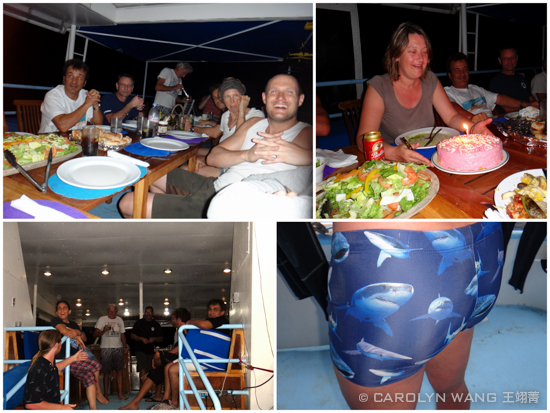
The group was relaxed as we began the journey home. Some of my favorite moments from the trip were just laughing and hanging out with new friends and the Yemaya crew. And of course, who can forget the epic shark swim suit of one our fellow guests (he shall remain nameless for his own dignity).
Photography Tips
The underwater photography equipment I used on this trip was the Sony RX-100 in a Recsea RX100 housing, UWL-04 wet lens on a quick adapter for fast removal/donning and dual Sea & Sea YS-D1 strobes. Please visit the 2014 Malpelo Island Scuba Diving photo essay on the Underwater Photography Guide for more underwater images, and tips and settings for Malpelo.
Final Thoughts
Would I go again? Should you go?
Yes, I would absolutely visit Malpelo again, and if you love diving with and photographing big fish and sharks, Malpelo should be on your wish list too.
The best time to go really depends on what you want to see. Hammerheads and Galapagos sharks are spotted pretty much year round but will vary in density. Whale sharks and giant mantas are possible to see in the summer, and the large schools of silky sharks and bait balls tend to be around the island from April – July. If you want to see all of these animals, June and July are your best months. If you’re aiming to see the largest schools of hammerheads, December is your best bet. I don’t think it’s possible to have a “bad” dive there. Read more on our Malpelo dive travel page.
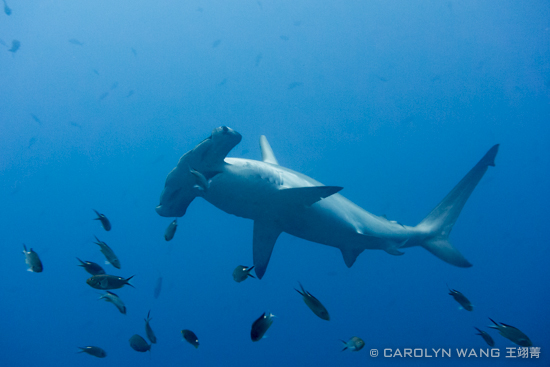
I think Malpelo is going to continue to grow in popularity as more people dive and discover it. It really is a wonderful destination and I found the travel to be very painless. The Coiba and Yemaya team took care of everything after arrival in Panama City, so thanks again to the team at Coiba Dive Expeditions and the Yemaya Crew for making it such a wonderful trip. They really go above and beyond to make sure you’re safe & comfortable:
Yemaya Crew: Captain Josh, Dive Guides Erika & Luis, Skiff Drivers Mello & Noriel, Chef Nestor, Barman Nelson, and Deckhand Felix.
Coiba Dive Expeditions: Representative Bianca, Tour/Excursion Guide Rainald, Driver Aleerio
About the Author
 Carolyn Wang is a video game marketing executive, PADI dive mistress, avid underwater photographer and explorer for Bluewater Travel. She has a passion for diving with sharks and exploring unusual sites, and can often be found in California waters while plotting her next dive adventure abroad.
Carolyn Wang is a video game marketing executive, PADI dive mistress, avid underwater photographer and explorer for Bluewater Travel. She has a passion for diving with sharks and exploring unusual sites, and can often be found in California waters while plotting her next dive adventure abroad.
Interested in booking a trip to Malpelo Island? Just Email Us for more info.




